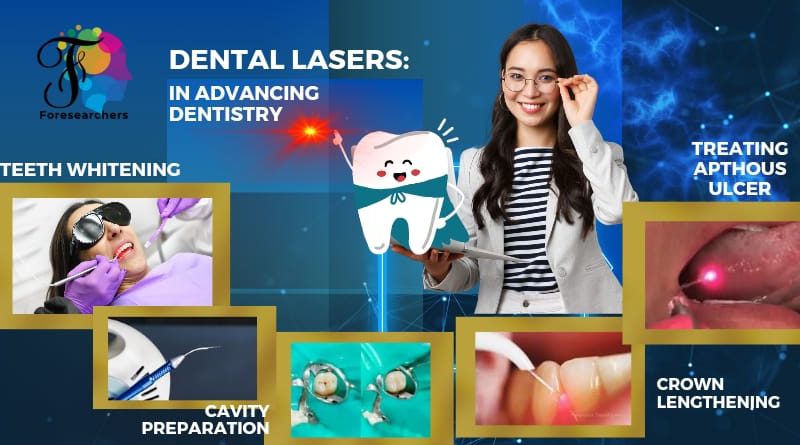Role of lasers in revolutionizing dentistry
Introduction: Role of lasers in revolutionizing dentistry:
The emergence of LASER ( Light amplification by stimulated emission of radiation) in revolutionarising dentistry has a great role in advancing dental procedures. Because of its ease of use and asset of using it in a controlled manner has made it an advanced tool in multi-procedure dental treatments.
Also, lasers have the ability to target specific tissues with incredible high accuracy. This allows dentists to perform procedures with minimal damage to surrounding tissues than conventional methods. It really made the dentists focus on how they approach anything with these powerful beams of light.
Lasers also reduce bleeding and swelling, reduce the risk of infection, and require very less anesthesia. All these benefits add up to a better patient experience, making lasers an increasingly popular choice for dental procedures.
Applications of Lasers in Dentistry
They can be used in removing tooth decay and preparing the surrounding enamel for filling.
Lasers are tremendously used in eliminating bacteria and provide complete disinfection during root canal procedures.
Lasers are effectively used in crown lengthening procedures without any damage and bleeding to the gingiva and with no pain.
A biopsy or lesion removal can be performed using lasers which allows for examination of the tissue for malignant conditions.
Lasers are effectively used in alleviating pain from oral aphthous ulcers and give immediate relief after procedure.
We can enhance teeth whitening procedures using lasers to activate a peroxide bleaching solution which is applied to the tooth surface.
The Benefits and Drawbacks:
Lasers are widely used in dentistry for a variety of procedures. Some of the advantages and disadvantages of using lasers in dentistry are:
Advantages
Lasers are very precise & show optimum results.
Lasers can be used without anesthesia because of its painless benefits and good quality and patients compliance.
Lasers provide faster healing because of its being minimally invasive comparative to conventional incisional procedures.
Due to the high accuracy of Lasers, it targets specific sites with minimal or no bleeding on site.
Lasers provide adequate disinfection and reduce chances of post procedural infection & bleeding.
Disadvantages:
1. Because of its cost and maintenance, Lasers are not widely used among every dental practice.
2. Lasers have limited applications in dentistry.
3. Lasers have less penetration power which makes them less effective in traumatic surgical procedures..
4. Lasers can cause permanent damage to the eyes if not properly used.
5. There is limited long-term research on the effects of laser therapy in dentistry that made Lasers difficult to fully evaluate its efficacy and safety.
Future of Lasers in Dentistry:
Lasers have played an important role in dentistry for quite some time, and it has been proven to have a tremendous scope in future. The use of lasers in dentistry has revolutionized many aspects of dental treatment, making procedures quicker, less invasive, and more comfortable for patients. Lasers have proven highly effective in treating many dental conditions, including gum disease, tooth decay, and even teeth whitening. Moreover, the precision and accuracy of lasers allow dentists to perform intricate procedures with minimal damage to surrounding tissues which leads to faster healing times and reduced patient’s discomfort.
With many advancements in technology and research, the future of lasers in dentistry looks very bright. As the demand for minimally invasive procedures and comfortable dental treatments grows, lasers will definitely become an increasingly demanding tool in dental procedures worldwide.
Conclusion:
One of the main assets of using Lasers in dentistry is that they allow for target specific and minimally invasive treatments. For example, Lasers can be used in preparing tooth cavities, crown lengthening procedures, disinfection of root canals, enhancing teeth whitening procedures, treating canker sores, providing minimally invasive operations for any surgical procedure, etc.
However, the use of lasers in dentistry also presents many risk factors. Lasers can cause damage to the eyes and skin, therefore, proper protective gear, such as eye masks or goggles and face shields, should be worn by both the patient and the dentist. In addition, lasers can produce heat, so water or air cooling systems are necessary to prevent tissue damage.
Dental practitioners must receive specialized training in laser technology and the specific procedures they plan to perform. It is also essential to inform patients of laser treatment’s potential risks and benefits and obtain informed consent before any surgery.
Get connected to our social media platforms:

